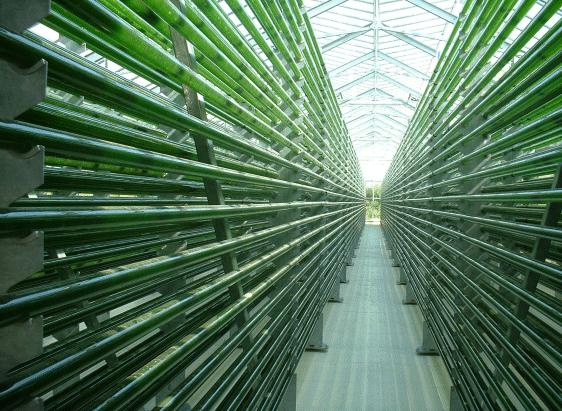By Don Elzer
We often take for granted that plants
are essential for maintaining our ecosystem, for producing oxygen, and providing the primary food source in a vast chain to which humans belong. But plant intelligence also reflects a soul-life and consciousness, which is an overall unifying factor within our entire planets ecology.
How the vegetable kingdom first emerged and became established is still mysterious to scientists. Plants have been evolving for many hundreds of millions of years as have minerals, viruses, and bacteria. One of the oldest fossils of any living form appears to be a microscopic plant, a bacterium, trapped in a rock in Swaziland, Africa, and reckoned to date back over three billion years. A simpler relative of blue-green algae is dated at 2.8 billion years.
In each era the right plants occupied the proper places and adjusted to prevailing conditions along with the animals that went with them. As the ages followed one another, the plants proliferated and helped to set the stage. A vital exchange among the kingdoms -- mineral, plant, and animal -- serves to produce climates and conditions appropriate to the time.
Presently, plants struggle as humans continue to be the primary consumers on the planet, and now blue-green algae is being positioned to once again become an instrument of the planetary continuum, only this time its role might prove to question the motives of the human experience on this planet.
On April 1st, a US company called PetroSun announced it will begin operation of its commercial algae-to-biofuels facility in Rio Hondo Texas which will produce an estimated 4.4 million gallons of algal oil and 110 million lbs. of biomass per year off a series of saltwater ponds spanning 1,100 acres. Twenty of those acres will be reserved for the experimental production of a renewable JP8 jet-fuel.
“Our business model has been focused on proving the commercial feasibility of the firms’ algae-to-biofuels technology during the past eighteen months. Whether we have arrived at this point in time by a superior technological approach, sheer luck or a redneck can-do attitude, the fact remains that microalgae can outperform the current feedstocks utilized for conversion to biodiesel and ethanol, yet do not impact the consumable food markets or fresh water resources,” said Gordon LeBlanc, Jr., CEO of PetroSun.
Microalgae have garnered considerable attention, since acre-by-acre it can produce 30-100 times the oil yield of soybeans on marginal land and in brackish water. The biomass left-over from oil-pressing can either be fed to cattle as a protein supplement, or fermented into ethanol.
The big problem has been figuring out how to collect and press the algae, and in the case of open ponds, to prevent contamination by invasive species. PetroSun seems to have figured it out, and this may be the first algae biofuel plant to get off the ground.
PetroSun won’t be making fuel immediately, but plans on either building or acquiring ethanol and biodiesel production plants. They’ve conveniently located themselves in an area accessible by barge, which should make fuel distribution cost effective.
According to energy commentator Tom Konrad of AltEnergy Stocks, Celluslosic Ethanol is all the rage, but less noticed, but significant is "Biofuel 2.0" which is biofuel based on algae.
“As I have consistently argued the people most likely to make money from biofuel are not the processors and distributors (who compete directly with petroleum or other fossil fuel-based products, and so have little pricing power), but the producers of feedstock, which, like oil, is in very limited supply, and so they will have pricing power,” says Konrad.
When it comes to converting sunlight into biomass, algae is the most productive type of plant. Biodiesel from algae has the potential to produce enough fuel to drive a Prius-type car 370,000 miles per acre per year (MAY), compared to 2,000 to 31,000 MAY for conventional biodiesel crops, while ethanol from switchgrass could produce 32,500 MAY. Furthermore, some strains of algae are as much as 40% oil by weight, leading to the hope of a large supply of oil which is much easier to convert into biodiesel than it is to ferment corn into ethanol.
There are two basic approaches to growing algae: open pond and closed reactor. The open pond method involves growing the algae in open ponds of water, much like it grows in nature. Open ponds are clearly quite cheap, but they require a reliable supply of water to replenish that lost from evaporation making them impractical in all but the wettest parts of the planet. The lack of temperature and weather control can further decrease yields from the theoretical potential. The other problem with open ponds is that it is impossible to keep weeds out of the mix which results in preventing the high percentages of oil required for fuel production.
The other option is the algae bioreactor, which a company called Solix Biofuels is creating. The Solix technology uses closed plastic bags agitated by rollers, has climate control with the use of controlled radiative cooling, and uses concentrated carbon dioxide emissions to enhance algal growth.
The bioreactor approach seems most likely to achieve the promise of extremely high yields, and even that is not without problems. Large scale bioreactors are complex systems. As such, they will be expensive and take great efforts to move from the lab to commercial scale.
Regardless, when we consider the biofuel option as an alternative fuel source then there is an order-of magnitude advantage, it would seem that algae is the green wave of the future, and actually so productive that it could produce enough biomass feedstock for us to continue to drive our SUV’s at will. Which might be the real challenge for us to address?
Research dollars are arriving on the doorsteps of biofuel research, this month Airbus and Honeywell announced a new project to provide one-third of aviation’s fuel needs by 2030 using second-generation biofuels made from things like vegetable biomass and algae.
The problem is, even if the Airbus plan works exactly as expected, it won’t make a difference in terms of aviation’s emissions problem.
Commercial aviation is growing about twice as fast as gross domestic product. Global aviation passenger growth rates now are about 5%, despite an economic downturn, the International Air Transport Association says. Countries like China, India, and Brazil have discovered the benefits of low-cost carriers and heightened travel behavior and now many experts expect that global passenger numbers will triple by 2030, when Airbus will unveil its new fuel brew.
Today, aviation uses about 5 million barrels a day of jet kerosene. Assume healthy efficiency gains, and you could still see 12 million barrels a day of jet fuel on the tarmac in 2030, If we throw algae-based bio-fuel into the mix, that still leaves 8 million barrels a day of old-fashioned fossil-based fuel leaving contrails in the sky—almost twice as much as today.
So cheaper, greener fuel means more planes, trains and automobiles all priming unbridled rates of consumption.
But wait. Unlike fossil fuel, algae is a more intelligent and a living fuel source, and when stacked 20 stories high in a bio-reactor it may just be able to give us the creative thinking we need to answer the question:
How can we live longer, better and happier lives while at the same time consume less than we do today?
(30)
Don Elzer writes and comments about travel, current affairs and the natural world. He is the Director of the Wildcraft Forest Ecomuseum and Bearfoot Canada and is the editor of The Monster Guide which can be found at www.themonsterguide.com
He can also be reached by email at: treks@uniserve.com



